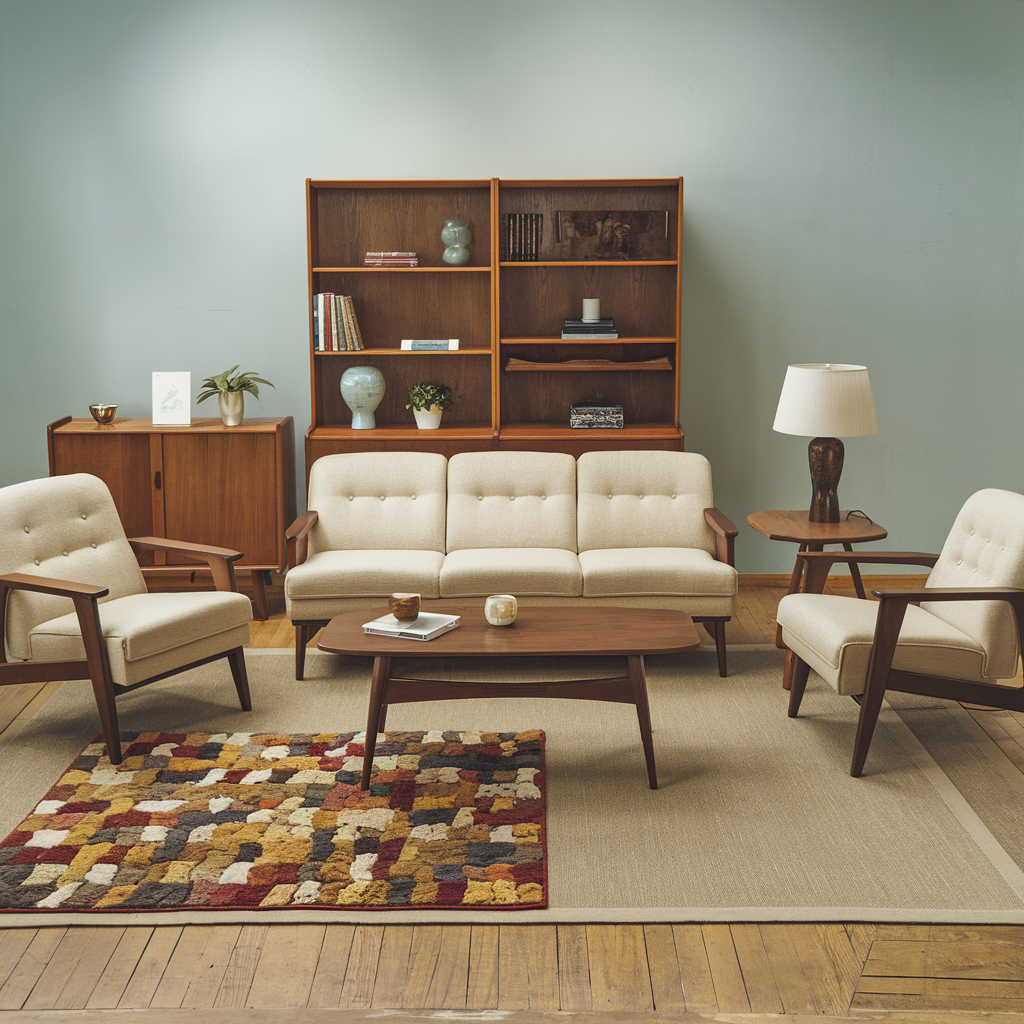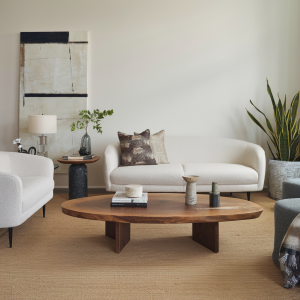1111111

Let’s talk about a situation that might be familiar to you; walking into a small apartment, furnished awkwardly with oversized furniture, and unable to barely move around. It’s not a comfortable environment to be in and too much chaos leads to it being a design blunder. Additionally, it is crucial to note how vertical space is utilized, the shades you decide to go with, and how that impacts the overall feel of the apartment. This is essential when discussing the most vital features. As someone living in a small apartment, you need to prioritize space, and using the furniture you have effectively will help. You can achieve this by avoiding five critical mistakes in the household, and should ensure you do not make those.
Key Takeaways
- Walk into spaces designed with cramped furniture such as couches, tables, and giant dressers, and notice how it dims the appeal of the area. Flat, lighter furniture pieces should be incorporated instead, and not overwhelming, oversized decor.
- Making the mistake of forcing a couch or bed into the room will lead to no space left for movement. The aforementioned furniture pieces should leave at least eighteen inches of room to freely walk around and not feel claustrophobic.
- As stated, darker colors should not be the primary shade of your walls. Instead, paired with lighter furniture, dark shades can be incorporated as accents.
- Not utilizing vertical space means missing out on storage and maximized organization. Achieve a modern look by using mounted shelves as means to enhance the perception of height.
- To free up floor space and maximize furniture usability, declutter by ensuring outdated, single purpose items are thrown away, and multi functional furniture is used instead.
Ignoring Scale and Proportion
When creating a design for a compact space, it is important to consider proportions and dimensions, and getting these two aspects mentiod correct can help you achieve a balanced and functional space. Consider how your furniture fits into the room’s size. Oversized pieces can easily dominate the space making the room feel cramped and cluttered. Look for furnishing that matches the size of your area as precisions enriches the appeal of the room. Look at the items visual weight to see if it compliments the room. A beautiful heavy coffe table can dominate the visual area is placed in an already clutered living room. Designs that are light and airy assist in creating an open feeling throughout the area. Additionally, think about the heights of your furnishing. Tall bookshelves draw the viewer upward with the room being perceived larger and low-profile sofas create an illusion of height which adds more height to the room. Anchoring the two with one being the book self and the other being the sofa provides a spacious environtment in the room. Furthermore, do not forget about the space proporitons of your interior. A large window unit can provide lots of light for the small room however positioned at the wrong area on the wall can restrict movement and energy flow within the room. Maintaining visual interest without overpowering the small wall is where the esscence is.Excessive Furniture Placement
 As easy as it is to furnish a little space according to your personal taste, overcrowding makes it easy for a well-kept space to turn into chaos in no time.
This might be counterintuitive, but throwing in a few more decorations and furniture can make a space feel too cozy to the point of easy navigation becoming a hassle.
To prevent your small spaces from going out of style while remaining highly functional, here are some tips to consider:
As easy as it is to furnish a little space according to your personal taste, overcrowding makes it easy for a well-kept space to turn into chaos in no time.
This might be counterintuitive, but throwing in a few more decorations and furniture can make a space feel too cozy to the point of easy navigation becoming a hassle.
To prevent your small spaces from going out of style while remaining highly functional, here are some tips to consider:
- Prioritize Essentials: Zone in on the more important items like a few comfy sofas or a coffee table that serves as a focal point. It is not necessary to place every single furniture piece that you love in a single room.
- Scale Down: Instead of bulky and heavy furniture, lean towards light and small pieces that suit the space. A dainty armchair and minimalist side table do wonders while not taking too much space.
- Leave Breathing Room: Leave room for people to actively move around the furniture. Spacing sofas and chairs around 18 inches apart adds to the feeling of a mobile and open environment.
Selection of Dark Colors
Choosing dark colors can often be a gamble for small spaces, but it doesn’t have to be. Dark colors can easily create a welcoming vibe but can also make a room feel cluttered if they are not used correctly. To avoid overwhelming your space, consider using dark colors as accents rather than the main wall color. For example, a dark accent wall adds depth to the room without boxing the entire space in. When choosing dark shades, pair them with lighter furniture and decor to balance the visual weight. This second layer allows for the dark paint to be utilized to its full effects while not dominating the room. Likewise, a poorly lit room can take away a lot of the invitingness a space can offer. That is why lighting is essential for darker colors as it can offset any heaviness. Decor material also plays a fundamental role in making a room feel welcoming. Soft fabrics combined with metallic touches can achieve that and destroy the dullness of dark shades. Lastly, consider your room’s layout. Rooms that receive plenty of light work best with darker hues. Following these tips can grant you the luxury of dark colours while keeping the space’s openness in check.Ignoring Vertical Space
When designing small spaces, most people do not take into account vertical space. However, taking advantage of such spaces can significantly improve style and function. Considering vertical space allows for a greater sense of openness and increases the potential storage options available. Here are three effective ways to incorporate vertical space into your design:- Pole Photographs: Rather than hanging photographs in a singular place on the wall, try hanging them from the ceiling. This not only gives the room a new perspective, it also provides ample storage while creating an illusion of height in the room.
- Mountable Files: Rather than putting files on the desk, try attaching them to the wall. This helps elevate the floor space and keeps the room organized while also showcasing decorative pieces and books.
- Vertical Light Displays: Mount light bulbs on tall poles to elevate them. This draws attention upward, making the space feel roomier and more inviting.
Forgetting Multi-Functional Pieces
Utilizing multifunctional pieces seems practical for a small living room. A sleek modern styled coffee table can double as a desk to improve functionality of the space. Consider an ottoman with storage or a sofa with a sleeping function that also has a seat that transforms into a bed. These are perfect for people who want to combine comfort and style while saving space. These items multiply the functions furniture serves enabling ease in movement around a place while leaving the decor intact. If you are not keen on getting multi-function furniture, then be ready to overstuff your place with single-purpose units. A good example would be a side table as they hold the potential of being sophisticated looking while enhancing your decor. Because of their minimal purpose, they are a waste of precious floor space. Tables that can be stowed away easily or ones that can be expanded when necessary are a better. Also, think about adding floating shelves that serve as decoration while providing utility for holding books without placing items on the floor to save space. Don’t forget to try to find dining tables days and which can retract for days alone and extend for when you’re entertaining guests. It’s easy to fit all the furniture into a small space without worrying about it feeling cramped if the furniture is multi-functional enabling it to be more productive and simpler to organize. Never underestimate the impact of multifunctional furniture products in redefining your home.Summary
Keeping balance is essential when dealing with small areas. While large furniture items may look appealing, they can easily overwhelm the available space. Striking tones create an open ambience while heavy tones can drag you down. Using vertical space promotes a sense of expansion, breaking the monotony of cluttered spaces. Style is married with practicality with the use of multi-functional pieces which highlights the boundless opportunities life has to offer. Instead of being limited by the space you have, let the space motivate creativity and achieve turning the space into a restful retreat.-
What’s the biggest mistake when designing small spaces?
Overcrowding the room with furniture is a common mistake. Keep the space open by choosing compact furniture and maximizing vertical storage.
-
Should I avoid using large furniture in a small room?
Yes, large furniture can make the space feel cramped. Opt for smaller, multifunctional pieces like fold-out tables or modular sofas.
-
Is it okay to use dark colors in small spaces?
Dark colors can make small spaces feel even smaller. Stick to lighter shades, but use dark accents sparingly for contrast.
-
How can I make a small room feel bigger?
Use mirrors to reflect light and create the illusion of space. Choose furniture with exposed legs and keep the floor visible to enhance openness.
-
Should I avoid cluttering the walls with art in small spaces?
Yes, too much wall art can overwhelm a small room. Choose a few statement pieces and space them out to maintain balance.
